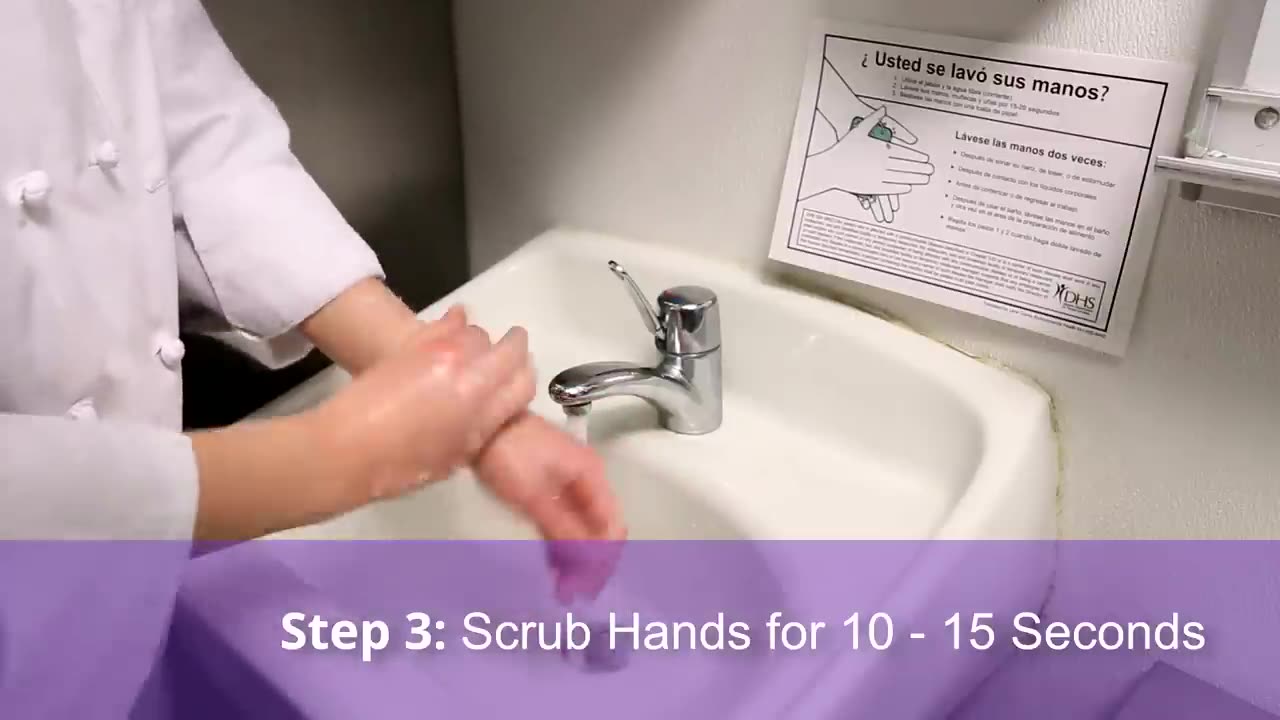Premium Only Content

Basic Food Safety_ Chapter 2 _Health and Hygiene_ (English)
### **Basic Food Safety: Chapter 2 – Health and Hygiene**
Maintaining personal health and hygiene is one of the most critical aspects of food safety. Contaminated food is often the result of poor hygiene practices, making it essential for food handlers to follow strict hygiene protocols to protect themselves and consumers.
---
### **The Link Between Health, Hygiene, and Food Safety**
1. **Preventing Contamination**:
Poor personal hygiene can introduce harmful bacteria, viruses, and other contaminants to food.
2. **Reducing Illness Transmission**:
Foodborne pathogens can be transferred from a sick individual to the food, posing risks to consumers.
3. **Building Consumer Trust**:
Cleanliness and proper hygiene practices demonstrate professionalism and care for customers.
---
### **Personal Hygiene Practices for Food Safety**
1. **Handwashing**:
- Wash hands with soap and warm water for at least 20 seconds.
- Always wash hands:
- Before handling food.
- After using the restroom.
- After touching raw meat, waste, or dirty surfaces.
- After coughing, sneezing, or touching the face.
2. **Clean Clothing and Appearance**:
- Wear clean uniforms or aprons.
- Tie back long hair or wear a hairnet.
- Keep nails short and clean, avoiding nail polish or artificial nails.
- Remove jewelry, as it can harbor bacteria or fall into food.
3. **Proper Use of Gloves**:
- Wear disposable gloves when handling ready-to-eat foods.
- Change gloves frequently, especially after handling raw ingredients.
- Wash hands before and after wearing gloves.
4. **Avoiding Direct Contact with Food When Sick**:
- Do not handle food if you are experiencing symptoms of illness, such as fever, diarrhea, or vomiting.
- Report illnesses to supervisors and seek medical clearance before returning to work.
---
### **Health Conditions and Their Impact on Food Safety**
1. **Common Illnesses of Concern**:
- **Norovirus**: Highly contagious and often spread through improper hygiene.
- **Hepatitis A**: Transmitted through contaminated hands or food.
- **Staphylococcus aureus**: Found on skin and can contaminate food through cuts or sneezing.
2. **Covering Cuts and Wounds**:
- Use waterproof bandages to cover cuts or wounds on hands or arms.
- Wear gloves over bandaged wounds to prevent contamination.
---
### **Workplace Hygiene Standards**
1. **Maintaining a Clean Environment**:
- Regularly clean and sanitize surfaces, equipment, and utensils.
- Use separate cleaning cloths for different areas to avoid cross-contamination.
2. **Proper Waste Management**:
- Dispose of garbage promptly and store it in closed bins.
- Wash hands after handling waste.
3. **Restroom and Break Areas**:
- Keep restrooms clean and well-stocked with soap and hand dryers.
- Designate separate areas for eating, drinking, and smoking away from food preparation zones.
---
### **Key Takeaway**
Health and hygiene are the foundation of food safety. By following strict personal and workplace hygiene practices, food handlers can significantly reduce the risk of contamination, protect consumer health, and maintain trust in the food supply chain.
-
 52:34
52:34
PMG
13 hours ago $0.11 earnedHannah Faulkner and Steve Friend | EXPOSE THE FBI CORRUPTION - KASH PATEL
5581 -
 LIVE
LIVE
Wendy Bell Radio
6 hours agoOn Day One
11,890 watching -
 1:59:27
1:59:27
Jeff Ahern
2 hours ago $1.41 earnedFriday Freak out with Jeff Ahern (6am Pacific)
7.62K -
 1:56:07
1:56:07
Game On!
11 hours ago $0.67 earnedJosh Allen is the NFL MVP! It's not even close!
7.33K1 -
 13:05
13:05
Neil McCoy-Ward
2 hours agoWhy The Media Won't Tell You What Milei Did In Argentina...
4.58K1 -
 3:56:44
3:56:44
Alex Zedra
14 hours agoLIVE! Trying to get achievements in Devour
201K26 -
 2:00:43
2:00:43
The Quartering
17 hours agoThe MAGA Wars Have Begun! Vivek & Elon Get Massive Backlash & Much More
210K93 -
 1:25:53
1:25:53
Kim Iversen
3 days agoStriking Back: Taking on the ADL’s Anti-Free Speech Agenda
136K118 -
 49:35
49:35
Donald Trump Jr.
20 hours agoA New Golden Age: Countdown to Inauguration Day | TRIGGERED Ep.202
251K271 -
 1:14:34
1:14:34
Michael Franzese
19 hours agoWhat's Behind Biden's Shocking Death Row Pardons?
96.5K57